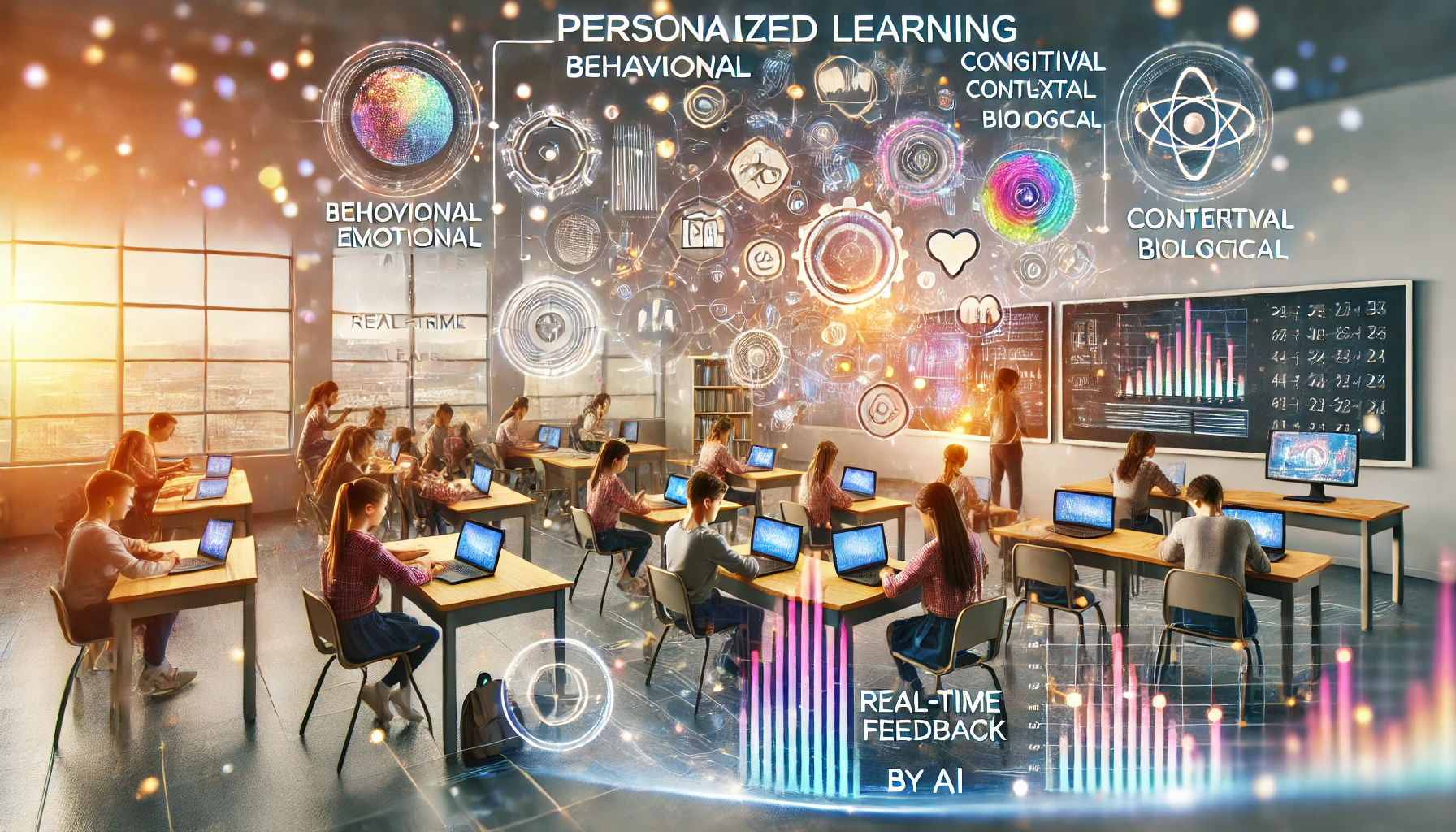Learnomics AI Model
- Design: Multi-modal AI model integrating behavioral, emotional, cognitive, contextual, and biological data.
- Objectives: Creating comprehensive learner profiles to enhance personalized learning experiences.
- Data Usage: Uses a wide range of data including iris scans, heart rate, EEG, skin conductance, along with traditional educational data.
- Application Areas: Personalized learning, academic performance optimization, mental health monitoring, real-time feedback.
Popular AI Models in Education
- GPT-4 (OpenAI)
- Design: Transformer-based language model.
- Objectives: Natural language understanding and generation.
- Data Usage: Diverse text data from the internet.
- Application Areas: Intelligent tutoring systems, automated grading, content generation, chatbots for student support.
- BERT (Google)
- Design: Transformer model for context understanding in text.
- Objectives: Understanding context in educational materials, question answering.
- Data Usage: Pre-trained on large text corpora.
- Application Areas: Text comprehension, question-answering systems, enhancing search capabilities within educational resources.
- CLIP (OpenAI)
- Design: Model trained on image-caption pairs.
- Objectives: Connecting visual and textual information.
- Data Usage: Image and text pairs.
- Application Areas: Visual aids in education, creating educational materials that combine images and text, enhancing digital textbooks.
- Knewton (EdTech)
- Design: Adaptive learning platform using data-driven insights.
- Objectives: Personalized learning paths based on student performance data.
- Data Usage: Student interaction data, performance metrics.
- Application Areas: Adaptive learning platforms, personalized content delivery, performance tracking.
- IBM Watson Education
- Design: AI-powered platform for personalized learning.
- Objectives: Delivering personalized learning experiences and insights.
- Data Usage: Various educational data points.
- Application Areas: Personalized learning, teacher assistance, curriculum development.
Detailed Comparison
- Data Integration and Usage:
- Learnomics AI: Integrates extensive multi-modal data (behavioral, emotional, cognitive, contextual, biological) for a holistic learner profile.
- Other Models: Primarily use traditional educational data (text, performance metrics), with some models integrating visual data (CLIP).
- Personalization:
- Learnomics AI: Offers highly personalized learning experiences tailored to individual student profiles.
- Other Models: Provide personalization based on interaction and performance data, but usually do not integrate emotional and biological data.
- Real-Time Feedback and Adaptation:
- Learnomics AI: Can provide real-time feedback and adaptation based on comprehensive data, including physiological responses.
- Other Models: Offer real-time feedback primarily based on interaction and performance data.
- Scope of Application:
- Learnomics AI: Focuses on personalized learning, mental health monitoring, and optimizing academic performance with a broad scope of data.
- Other Models: Generally focus on content delivery, question answering, text comprehension, and intelligent tutoring.
- Comprehensive Learner Profiles:
- Learnomics AI: Creates detailed and holistic learner profiles encompassing various aspects of a student’s learning journey.
- Other Models: Typically create profiles based on performance metrics and interaction data, lacking the depth of multi-modal integration.
- Innovative Data Types:
- Learnomics AI: Utilizes innovative data types such as EEG, heart rate, and skin conductance to inform learning experiences.
- Other Models: Rely on more traditional educational data, though models like CLIP add visual data integration.
Conclusion
In educational settings, the Learnomics AI Model offers a more comprehensive and personalized approach by integrating a wider range of data types to create detailed learner profiles. This allows for real-time feedback and adaptation, addressing both academic and emotional needs of students. While other popular AI models provide significant benefits in terms of content delivery, question answering, and personalized learning paths, they lack the depth and breadth of data integration seen in Learnomics AI. This makes Learnomics AI a potentially more powerful tool for enhancing personalized education and supporting holistic student development.

